Archive of Biomedical Science and Engineering
The effect of pocket mask training on the self-efficacy and willingness to perform artificial respiration in cardiac arrest patients: A randomized control trial
Woong-Bin Jeong1, Jae-Gu Ji1, Yong-Song Seo1, Seong-Ju Kim2, Ye-Rim Kim3, Jae-Seong Park3, Hyeong-Tae Kim5, Su-Il Kim5 and Yun-Deok Jang1*
2Department of Paramedicine, Tongmyong University, Republic of Korea
3Department of Paramedicine, Busan Health University, Republic of Korea
4Regional Emergency Center, Yonsei University Wonju College of Medicine, Wonju Severance Christian Hospital, Republic of Korea
5Department of Paramedicine, Sunlin University, Republic of Korea
Cite this as
Jeong WB, Ji JG, Seo YS, Kim SJ, Kim YR (2024) The effect of pocket mask training on the self-efficacy and willingness to perform artificial respiration in cardiac arrest patients: A randomized control trial. Arch Biomed Sci Eng 10(1): 001-008. DOI: 10.17352/abse.000031Copyright
© 2024 Jeong WB, et al. This is an open-access article distributed under the terms of the Creative Commons Attribution License, which permits unrestricted use, distribution, and reproduction in any medium, provided the original author and source are credited.Background: Out-of-hospital cardiac arrest due to hypoxia, it is necessary to provide adequate oxygen for correction of the cause. So, the purpose of this study was to compare the overall quality of CPR, willingness to perform ventilation using ventilation aids, and self-efficacy compared to the enlisted ventilation method (MMV) by educating the general public on pocket masks (MPV), which are respiratory aids.
Methods: This study was a randomized controlled comparative study, in which 110 study subjects were listed with numbered names in the order in which they applied for training, and random numbers were named A (MMV method) and B (MPV method) in that order. Randomization generated a random number order using the SAS program, and the generated random numbers A and B were arranged from 1 to 110 in the order in which they applied for training, through this, they were classified into A groups (N = 57) and B groups (N = 53). The study subjects classified into Group A received CPR training including enlistment ventilation on April 22, 2023, and the trainees in Group B received CPR training using a ventilator on April 29, 2023.
Results: The primary outcome is that the result of the comparison of ventilation quality is the mean Tidal Volume (TV) before training for MPV is 1076 ± 422, whereas the mean TV for MMV is 1015 ± 510 (p < 0.05). After training, the mean tidal volume (TV) for MPV is 876ml ± 422, whereas the mean TV for MMV is 1001 ± 516, indicating that MMV resulted in a significantly higher tidal volume than the ILCO guidelines. After training, comparing the time per ventilation cycle, the MPV group showed 0.923sec ± 0.432, while the MMV group showed 1.021sec ± 0.535 (p < 0.05). After completing two ventilations, it is evident that there is a delay in starting the next chest compression in the MMV group compared to the MPV group (MMV: 10.21 ± 4.112 vs. MPV: 9.88 ± 2.831, p < 0.05).
Conclusion: As a result of this study, the researcher recommends adding training on pocket masks when educating artificial respiration in CPR training conducted in Korea, given that the performance accuracy of pocket masks is high and the efficient ventilation rate is high.
Introduction
The majority of cardiac arrests occur outside of hospitals, making it a significant public health issue not only in Korea but globally [1,2]. The global incidence rate of out-of-hospital cardiac arrests is reported to be 55 cases per 100,000 people annually. According to the Cardiovascular Disease Surveillance Project (CAVAS) conducted by the Korea Disease Control and Prevention Agency in 2022, the incidence rate of out-of-hospital cardiac arrests in South Korea was 41.3 cases per 100,000 people, and the survival rate due to Cardiopulmonary Resuscitation (CPR) ranged from 2.4% to 3.6% [3]. This survival rate is lower compared to North America (7.9% - 11.4%), Europe (10.7%), and Japan (12%) [4,5].
Furthermore, the rate of CPR performed by bystanders upon witnessing a cardiac arrest in South Korea is 13.5%, which, although an increase from a decade ago, is significantly lower than in other advanced countries such as North America (34.3%), Europe (34.2%), and Japan (21%) [6]. In an effort to solve these issues, South Korea has implemented policies to increase the rate of CPR performed by bystanders. This includes expanding CPR education to the general public, promoting awareness, and introducing 5 laws regarding emergency medical care, school health law, and child safety laws to designate certain individuals to receive periodic CPR training.
The content of basic CPR education programs provided to the general public in South Korea include recognition of cardiac arrest, seeking help, chest compressions, and proper use of defibrillators [7,8]. Artificial respiration training is not included in basic CPR courses, although it is part of advanced courses [7]. According to the CPR guidelines distributed by the American Heart Association, providing artificial respiration during CPR has been shown to have benefits in certain situations, such as suspected hypoxia-related seizures, drowning, and airway obstruction [9,10]. In these cases, individuals trained in artificial respiration are recommended to perform it after securing the airway, as these situations may involve cardiac arrest due to hypoxia, and performing CPR simultaneously can assist in correcting the cause and aiding in patient recovery [11,12].
There are two methods of artificial respiration that laypersons can perform: mouth-to-mouth respiration and mouth-to-nose respiration [13,14]. Mouth-to-mouth respiration involves using the ‘head tilt chin lift’ technique; blocking the patient’s nose with fingers, covering their mouth with one’s own mouth, and delivering breaths for 1 second, repeating this process twice. Mouth-to-nose respiration involves blocking the patient’s mouth and blowing air into their nose without using the ‘head tilt chin lift’ technique. However, due to the spread of respiratory infections such as the COVID-19 virus, recent changes in artificial respiration guidelines for cardiac arrest patients recommend using a cloth or not performing artificial respiration at all instead of direct mouth-to-mouth or mouth-to-nose respiration [15,16].
Even as we transition to the post-COVID phase, there remains a fear among the general public about mouth-to-mouth respiration, including concerns about exposure to blood and body fluids. This hesitation has real-world consequences, as people become reluctant to perform Cardiopulmonary Resuscitation (CPR) on patients and may avoid bystander-initiated CPR. A survey conducted in Canada compared bystander CPR rates before and during the spread of the COVID-19 virus [17]. The results showed a decrease in CPR rates during the period of virus spread, indicating a genuine fear among the public about artificial respiration.
Therefore, there is a need for an alternative method to safely administer artificial respiration by laypersons to patients experiencing cardiac arrest due to hypoxia. In light of this, the research team aims to address the fear of infection and fluid exposure by providing education to the general public on the use of a “pocket mask” (mouth-to-pocket mask ventilation: MPV), a device used by emergency medical personnel for artificial respiration assistance. The goal is to overcome these concerns and offer an effective means for laypersons to perform artificial respiration safely. The use of a ‘pocket mask’ (mouth-to-pocket mask ventilation: MPV) allows for artificial respiration without direct contact between the rescuer and the patient, and it can maintain more effective lung ventilation than mouth-to-mouth respiration (Figure 1). The most crucial aspect when using a pocket mask is to ensure a tight seal on the patient’s face to prevent air leakage. To achieve this while maintaining the airway, the rescuer should use both hands from the top of the head of the patient. The rescuer places their thumb on the mask, pressing it against the patient’s face, while the remaining fingers wrap around the patient’s chin and lift it up [18].
When using a pocket mask, the rescuer can provide artificial respiration through their own exhalation or use a ventilation bag for artificial respiration. When using a ventilation bag, one hand is used to maintain the patient’s airway while pressing the mask tightly to the face. The other hand is then used to squeeze the bag for artificial respiration [19]. When performing artificial respiration with a pocket mask, approximately 60% of oxygen can be administered by delivering about 10 liters of oxygen per minute through the mask [18,19]. A pocket mask equipped with a valve helps prevent the rescuer from inhaling the patient’s exhaled air.
Therefore, the purpose of this study is to investigate the overall quality of Cardiopulmonary Resuscitation (CPR), the willingness to perform artificial respiration using a pocket mask (MPV), and self-efficacy when compared to the traditional Mouth-to-Mouth Ventilation (MMV) method. The study aims to provide foundational data by educating laypersons on the use of the pocket mask and assessing the impact of the presence or absence of respiratory assistance devices, such as the pocket mask, on the intentions of laypersons to perform artificial respiration, so that essential information to enhance the willingness of laypersons to use respiratory assistance devices during cardiopulmonary resuscitation can be provided [19].
Materials and methods
Study design and subjects
In this study, we conducted a Pre-Post Design and randomized control trial including CPR education including ventilation devices for the layperson. This study was conducted from March 2023 to November 2023. Before conducting this study, we explained the purpose and informed consent to participants who showed interest in the study and expressed their intention. This study was conducted in three steps. In the first, the participants completed self-report questionnaires regarding general characteristics, CPR knowledge, self-efficacy for CPR, and confidence in performing CPR. In the second the students participated in four hours of CPR education including ventilation device.
Participants
This study was conducted from March 1 to November 30, 2023, at the Lifelong Education Center of B University in Region B, South Korea. The participants included voluntary adults, ages 19 through 64, who had applied to participate in general Cardiopulmonary Resuscitation (CPR) training. The individuals participating in the training were residents near ‘B University’ and had previously attended regular CPR training sessions organized by the ‘Lifelong Education Center’. Over a two-week period with two sessions per week, 119 individuals participated in the training. Among them, 110 participants, who voluntarily expressed their intention to participate in the research after receiving an explanation of the study’s purpose and methods, provided their consent to proceed with the study. The research received approval from the Institutional Review Board (IRB No.: 2023-02-001) before commencement.
Randomization (MMV vs. MPV)
To conduct a randomized controlled trial with the 110 participants in this study (Figure 2), we generated a random order by assigning labels, A (MMV method) and B (MPV method), in the order of application for training. Randomization was carried out using the SAS 9.2 version (SAS Institute Inc., Cary, NC) to create a random order of labels A and B. The generated random labels, A and B, were then assigned to participants in the order of application, ranging from 1 to 110. This process resulted in the classification of participants into Group A (N = 57) and Group B (N = 53) [20].
Participants in Group A received CPR training, including Mouth-to-Mouth Ventilation (MMV), on April 22, 2023. On the other hand, participants in Group B received training on cardiopulmonary resuscitation using a pocket mask (MPV method) on April 29, 2023 [20].
Development of CPR training program including artificial ventilation devices
To develop the CPR training program, two emergency medicine specialists with experience in general CPR education and five professors from the emergency medical services department collaborated. The team focused on creating a program specifically tailored for laypersons utilizing artificial ventilation devices. Among these collaborators, the five professors from the emergency medical services department and the two specialists in emergency medicine possess expertise in developing and advising on general CPR education. They hold qualifications as instructors for layperson CPR, regularly conducting training sessions. The development of the educational curriculum for this study occurred from March 1 to March 30, 2023. The curriculum comprised a one-hour theoretical lecture and two hours of practical instruction through video demonstrations (Figure 3).
Artificial respiration assistive device (pocket mask)
For this study, the artificial respiration assistive device used was the ‘Pocket mask’ (Laerdal, Stavanger, Norway). The composition of the pocket mask includes a part that comes into contact with the patient’s face treated with PVC silicone for easy adherence, preventing air leakage. It has an oxygen inlet for a convenient connection to an oxygen tube, facilitating the delivery of high-concentration oxygen. The portion allowing respiration is equipped with a one-way valve to prevent the transmission of airborne contaminants to the rescuer (Figure 4). There are two methods of use [21]. One method involves placing the pointed part of the silicone on the bridge of the patient’s nose, creating a ‘C’ shape with the rescuer’s thumb and forefinger, and positioning them on the upper part of the mask to press it against the patient’s face. The remaining three fingers are placed on the patient’s forehead. Using the thumb and forefinger of the other hand, grasp both the mask and the patient’s chin to ensure a proper seal of the mask (Figure 5). Another method involves sitting above the patient’s head, with the pointed silicone part of the mask positioned on the bridge of the patient’s nose. The rescuer uses both thumbs to press the sides of the mask, ensuring it adheres to the patient’s face, while the remaining four fingers of both hands grasp the patient’s jaw (Figure 6). When used during Cardiopulmonary Resuscitation (CPR) and if there is only one rescuer, the former method is employed. If there are two rescuers, the latter method is used. For the purpose of this study, the former method was taught to participants, including the overall procedure for performing CPR with this method [20].
Evaluation of cardiopulmonary resuscitation procedures including artificial respiration (MMV vs. MPV)
The scale for evaluating artificial respiration procedures was developed directly by the researchers, and its validity was verified by two emergency medicine specialists and five professors in emergency medical services. After observing the trainees’ procedures for each item, the operator entered either ‘Yes = 1 point’ or ‘No = 0 point’ for the researcher to score. The possible range of procedural scale scores in this study is from 0 to a maximum of 15 points. To assess the quality of cardiopulmonary resuscitation (CPR) in the two groups, the ‘overall score’ measured from the simulator was recorded after two minutes of CPR. Additionally, for evaluating the quality of ventilation in the two groups, the CPR evaluation was performed using ‘SimMan 3G plus’ (Laerdal, Stavanger, Norway), which allows ventilation assessment. Ventilation quality in the two groups was evaluated based on hands-off time (min), tidal volume (ml), inspiratory time (s), and time to start chest compression (s). Good ventilation was defined as providing a tidal volume between 700 and 1000 ml according to ILCOR standards.
Self-efficacy and willingness to perform
In order to investigate the impact of Cardiopulmonary Resuscitation (CPR) education involving artificial respiration using a supplementary device on the willingness to perform artificial respiration and self-efficacy, this study employed a pre-post comparison method of checking the dependent variables that change before and after education in two different groups, inferring causation. Prior to conducting the education, a pre-survey was administered to the participants, followed by a post-survey after the education. The pre and post-surveys were modified from questionnaires used in studies by Riggs, et al. to fit the context of this study [22]. The pre-survey covered the participants’ general characteristics, including gender, age, marital status, education level, height, weight, and lung capacity.
The pre-and post-surveys assessed the willingness to perform artificial ventilation. Questions in this domain included, “If you witnessed someone experiencing cardiac arrest and had access to a pocket mask, would you directly perform artificial ventilation during CPR?”, “Do you believe it is essential for the person witnessing a victim of cardiac arrest due to hypoxia to perform artificial ventilation?”, “If you were to directly perform ‘artificial ventilation using a pocket mask’ on a cardiac arrest patient, how confident are you?”, and “If there were artificial ventilation devices available in your vicinity (public places and institutions), would you be confident in using them for artificial ventilation on a cardiac arrest patient in need?” The self-efficacy survey included questions such as “I am confident in using a ventilation device after the training”, “I am confident that I have sufficient ability to use a ventilation device”, and “I am confident in my ability to successfully perform cardiopulmonary resuscitation, including artificial ventilation using a ventilation device.” The reliability levels for each factor were measured in the general characteristics domain at 0.78, in the CPR-related domain at 0.86, in the artificial ventilation-related domain at 0.86, and in the domain related to the intention to perform artificial ventilation at 0.87. The reliability in this study was Cronbach’s α = 0.93.
Data analysis methods
In this study, data was analyzed using the SPSS 23.0 program. Continuous variables were expressed as means and standard deviations, while categorical variables were presented as counts (%). To compare the willingness to perform artificial ventilation and self-efficacy before and after the training, reliability was calculated for each factor using Cronbach’s alpha. Additionally, to compare the quality of artificial ventilation and CPR between the two groups, non-parametric testing (Mann-Whitney test) was employed due to the lack of normal distribution of the data before and after education in the same group. The significance level for statistical analysis was set at p < 0.05.
Results
General characteristics of study participants
The general characteristics of the participants in the study are presented in Table 1. Among the total 110 participants, the MMV group consisted of 34 males (59.64%) and 23 females (40.35%), with an average age of 43.4 years ± 19.45. In the MPV group, there were 32 females (60.37%), outnumbering males, and the average age was 40.1 years ± 18.11. Regarding the occupation of the participants, in the MMV group, teachers were the most common (26.31%), followed by others (24.56%). In the MPV group, self-employed individuals were the most prevalent (43.39%), followed by teachers (30.18%). The height was approximately 1.2 cm higher in the MMV group (178.4 ± 6.1) compared to the MPV group (177.2 ± 7.1), and the weight was approximately 1.11 kg higher in the MMV group (74.32 ± 30.12) compared to the MPV group (73.21 ± 24.33). The measured lung capacities were 4564 ± 463 for the MMV group and 4601 ± 644 for the MPV group.
Comparison of ventilation quality (MMV vs. MPV)
The comparison of before and after training of the ventilation quality between the two different methods is presented in Table 2. The mean tidal volume (TV) before training for MPV is 1076 ± 422, whereas the mean TV for MMV is 1015 ± 510 (p < 0.05). After training, the mean tidal volume (TV) for MPV is 876ml ± 422, whereas the mean TV for MMV is 1001 ± 516, indicating that MMV resulted in a significantly higher tidal volume than the ILCO guidelines. After training, comparing the time per ventilation cycle, the MPV group showed 0.923sec ± 0.432, while the MMV group showed 1.021sec ± 0.535 (p < 0.05). After completing two ventilations, it is evident that there is a delay in starting the next chest compression in the MMV group compared to the MPV group (MMV: 10.21 ± 4.112 vs. MPV: 9.88 ± 2.831, p < 0.05).
Comparison of self-efficacy and willingness of ventilation to perform between the two groups after artificial respiration education
The results of comparing self-efficacy between the two groups are presented in Table 3. In the MMV group, changes in items before and after education show an increase in confidence from 2.82 ± 0.34 to 3.21 ± 1.21, sufficient ability from 1.17 ± 0.78 to 2.09 ± 1.09, and confidence in performing CPR from 1.08 ± 0.67 to 2.32 ± 1.43. In the MPV group, there is an increase in confidence, sufficient ability, and confidence in performing CPR from 2.82 ± 0.34, 1.17 ± 0.78, and 1.089 ± 0.67 to 3.21 ± 1.21, 2.09 ± 1.09, and 2.32 ± 1.43, respectively.
The results of the comparison of willingness to perform between the two groups are presented in Table 4. When examining the pre- and post-education willingness of the MMV group, it can be observed that the average values increased by approximately 2.25 for performing direct artificial respiration (11->14), recognizing the need for artificial respiration in hypoxia patients (19->22), self-confidence in performing artificial respiration (9->11), and willingness to perform when having a pocket mask in public places (2->3). In the MPV group, the average values increased by approximately 8.25 for performing direct artificial respiration (9->19), recognizing the need for artificial respiration in hypoxia patients (8->20), self-confidence in performing artificial respiration (2->5), and willingness to perform when having a pocket mask in public places (1->9). The difference in willingness to perform before and after education was more significant in the MPV group compared to the MMV group (MMV: p - 0.049 vs. MPV: p - 0.001).
Discussion
This study aimed to investigate the changes in willingness to perform artificial respiration and self-efficacy regarding artificial respiration among non-medical individuals through education on the use of a pocket mask. The pocket mask, an artificial respiration assistive device, has been used by emergency responders in the field since the 1990s, and its use is permitted after completing training. Currently, frontline emergency responders, including first-class emergency medical technicians in Korea, use pocket masks to perform artificial respiration on patients in need. As a result, research on the use of pocket masks has primarily focused on emergency responders or healthcare professionals [21,22]. The distinctiveness of this study lies in providing education on pocket masks to the general public and conducting training on Cardiopulmonary Resuscitation (CPR) using artificial respiration assistive devices. Furthermore, by analyzing the changes in participants’ self-efficacy and willingness to perform artificial respiration using the pocket mask, this study confirms the potential for the general public to perform artificial respiration with the aid of such devices.
Previous literature on the use of artificial respiration assistive devices reveals comparisons between trained water rescue personnel performing artificial respiration using mouth-to-mouth ventilation and using a pocket mask [22,23]. Results from these studies, focusing on trained water rescue personnel, indicate that when using a pocket mask for artificial respiration, the ventilation rate and accuracy were higher compared to mouth-to-mouth ventilation. While these studies targeted a different population, specifically trained water rescue personnel, the findings align with the results of this study, which focused on educating the general public on the use of pocket masks [23,24].
In this study with non-medical individuals, the group trained with a pocket mask demonstrated higher ventilation rates, increased self-efficacy, and greater willingness to perform artificial respiration. This consistent outcome suggests that the advantages of the pocket mask contribute to these positive results. The pocket mask’s one-way valve allows ventilation without direct contact with the patient, reducing the fear associated with artificial respiration. Additionally, the closed one-way valve prevents the transmission of the patient’s exhaled air to the rescuer, potentially increasing confidence and willingness to perform artificial respiration.
Furthermore, as observed in the results of this study, the group performing mouth-to-mouth ventilation exhibited a longer interruption in chest compressions compared to the group using a pocket mask for artificial respiration. According to the current American Heart Association CPR guidelines, it is recommended not to exceed 10 seconds between the completion of two rescue breaths and the initiation of chest compressions to minimize interruptions in chest compressions. This recommendation aims to reduce the delay in chest compressions [25].
The potential challenges associated with mouth-to-mouth ventilation may stem from concerns related to the risk of respiratory infections or unhygienic perceptions, leading to hesitation or delays in performing artificial respiration. The existing literature, such as the study conducted by Kim, et al. [19]. on emergency medical students, highlights anxiety and concerns regarding mouth-to-mouth ventilation. The research revealed that, due to the spread of COVID-19, emergency medical students expressed reluctance to perform mouth-to-mouth ventilation, citing fears of infection and anxiety. Students also indicated a preference for chest compressions only, especially when faced with oral secretions and foreign materials around the patient’s mouth [26]. The findings of this study align with the broader understanding that mouth-to-mouth ventilation involves direct contact with the patient’s mouth, leading even trained individuals to harbor concerns and fears related to the procedure [27].
In another study, it was observed that during simulated training with high levels of oral secretions around the patient’s mouth, rescuers tended to avoid mouth-to-mouth ventilation [22]. This aversion to artificial respiration led to longer interruptions in chest compressions during Cardiopulmonary Resuscitation (CPR). In the current CPR training for the general public in South Korea, mouth-to-mouth ventilation is often the focus of education, potentially causing fear of infection and reluctance to perform artificial respiration [28]. This avoidance behavior or prolonged interruptions in chest compressions due to concerns about artificial respiration may hinder effective CPR, especially for patients experiencing cardiac arrest due to hypoxia. Given these concerns, there is a need for alternative approaches to CPR training [29].
Through the results of this study, which provided short-term education and evaluation of pocket mask use among the general public, the researchers recommend the inclusion of pocket mask education in CPR training programs conducted in South Korea [7]. The study indicates that, despite the brief training period, pocket masks demonstrate high-performance accuracy and efficient ventilation rates. Therefore, incorporating pocket mask education alongside artificial respiration training in CPR programs could enhance the overall quality of CPR education [30].
Additionally, the study suggests that installing pocket masks alongside Automated External Defibrillators (AEDs) in public places could enable trained individuals to perform artificial respiration during CPR, contributing to improved survival rates, especially for hypoxic cardiac arrest patients. The researchers anticipate that providing education on pocket mask use, along with highlighting cases of cardiac arrest due to hypoxia and the potential increase in survival rates when artificial respiration is appropriately applied, could result in high-quality CPR training in South Korea.
Conclusion
This study is the first to demonstrate that MPV is superior to MMV during simulated single-rescuer CPR, as it reduces the no-flow time and results in more effective ventilation. Our results suggest that compared to MMV, CPR quality is improved using MPV.
Author contributions
“Conceptualization, YDJ., and WBJ.; methodology, SIK.; software, SIK; validation, YSS., JGJ. formal analysis, YRK JSP.; investigation, HTK.; resources.; data curation, HTK; writing—original draft preparation, YDJ.WBJ.; writing—review and editing HTK.; visualization SJK JGJ; supervision, YDJ. All authors have read and agreed to the published version of the manuscript.”
Institutional review board statement
“The study was conducted in accordance with the Declaration of Helsinki, and approved by the Institutional Review Board of Inje University Busan Paik Hospital (IRB No.: 2023-02-001, Date:2023-02-02).”
Informed consent statement
“Informed consent was obtained from all subjects involved in the study. And written informed consent has been obtained from the participants to publish this paper”
Data availability statement
Data is unavailable due to privacy or ethical restrictions.
- Alam P. Structures and Composition of the Crab Carapace: An Archetypal Material in Biomimetic Mechanical Design. Results Probl Cell Differ. 2018;65:569-584. doi: 10.1007/978-3-319-92486-1_25. PMID: 30083936.
- Greenfeld I, Kellersztein I, Wagner HD. Nested helicoids in biological microstructures. Nat Commun. 2020 Jan 13;11(1):224. doi: 10.1038/s41467-019-13978-6. PMID: 31932633; PMCID: PMC6957508.
- Nwambu CN, Robert C, Alam P. The Tensile Behaviour of Unaged and Hygrothermally Aged Asymmetric Helicoidally Stacked CFRP Composites. Journal of Composites Science. 2022; 6:137.
- Wen Y, Chen IH, Chen JM, Meyers AM. Flexible Dermal Armor in Nature, The Journal of the Minerals, Metals & Materials Society. 2012; 64:475-485.
- Ginsburg D, Pinto F, Lervolino O, Meo M. Damage tolerance of bio-inspired helicoidal composites under the low-velocity impact, Composite Structure. 2014;161:187-203.
- Nwambu C, Robert C, Alam P. Viscoelastic properties of bioinspired asymmetric helicoidal CFRP composites. MRS Advance. 2022. (https://doi.org/10.1557/s43580-022-00332-0)
- Goertzen W, Kessler M. Dynamic mechanical analysis of carbon/epoxy compositesfor structural pipeline repair, Composites: Part B. 2007; 38:1–9.
- Zhao C, Zhou Z, Le Guigao. Research on compression properties of unidirectional carbon fiber reinforced epoxy resin composite (UCFREP). Journal of Composite Materials. 2020; 55:11.
- Melo JD, Radford DW. Time and temperature dependence of the viscoelastic properties of CFRP by dynamic mechanical analysis. Composite Structures. 2005; 70:240-253.
- Bussu G, Lazzeri A. On the use of dynamic mechanical thermal analysis (DMTA) for measuring glass transition temperature of polymer matrix fibre reinforced composites, Journal of Materials Science. 2006; 41:6072-6076.
- Coban O, Mustafa OB, Tamer S, and Volkan G. Effect of fibre orientation on viscoelastic properties of polymwer matrix composite subjected to thermal Cycles. Polymer composites. 2010; 411-416.
- Wegst UG, Bai H, Saiz E, Tomsia AP, Ritchie RO. Bioinspired structural materials. Nat Mater. 2015 Jan;14(1):23-36. doi: 10.1038/nmat4089. Epub 2014 Oct 26. PMID: 25344782.
- Muralidhara B, Babu KSP, Suresha B. The effect of fiber architecture on the mechanical properties of carbon/epoxy composites. Materials Today: Proceedings. 2020; 22:1755–1764.
- Nwambu CN, Robert C, Alam P. Dynamic mechanical thermal analysis of unaged and hygrothermally aged discontinuous Bouligand structured CFRP composites. Funct. Compos. Struct. 2022; 4:045001.
- Ekwedigwe CM, Nwambu CN, Osakwe FO, Nnuka EE. Mechanical Properties of Hybrid Rice Straw Fibre and Walnut Shell ASH Particulate/Epoxy Composite, International Journal of Science and Engineering Invention. 2023: 01-07.
- Kashan JS. Optimization Using Taguchi Method for Physical and Mechanical Properties of Bio Mimicking Polymeric Matrix Composite for Orthodontic Application,” Engineering and Technology Journal Part A. 2019; 37:5; 181-187.
- Anmar AO, Hakan K, Farag MM. Effect of reinforcing materials on mechanical properties of composite material using Taguchi method. Journal. Physics: Conference. Series. 2021; 1973 012246.
- ISO 6721-11:2019. ISO. http://www.iso.org/standard/74988.html
- Banerjee P, Raj R, Kumar S, Bose S. Tuneable chemistry at the interface and self-healing towards improving structural properties of carbon fiber laminates: a critical review. Nanoscale Adv. 2021 Aug 17;3(20):5745-5776. doi: 10.1039/d1na00294e. PMID: 36132674; PMCID: PMC9419231.
- Ekwedigwe CM, Nnakwo KC, Nwambu CN. Viscoelastic properties of alkaline treated walnut shell/rice straw fiber/epoxy biocomposite. Journal Civil Engeering and Environmental Science. 2023; 9(1): 009-013.
- Yang W, Chen IH, Gludovatz B, Zimmermann EA, Ritchie RO, Meyers MA. Natural flexible dermal armor. Adv Mater. 2013 Jan 4;25(1):31-48. doi: 10.1002/adma.201202713. Epub 2012 Nov 15. PMID: 23161399.
Article Alerts
Subscribe to our articles alerts and stay tuned.
 This work is licensed under a Creative Commons Attribution 4.0 International License.
This work is licensed under a Creative Commons Attribution 4.0 International License.
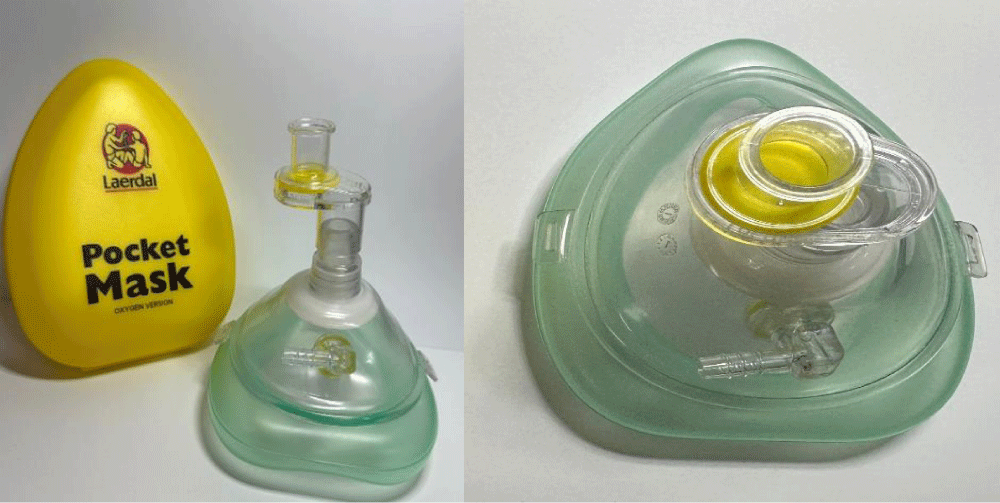
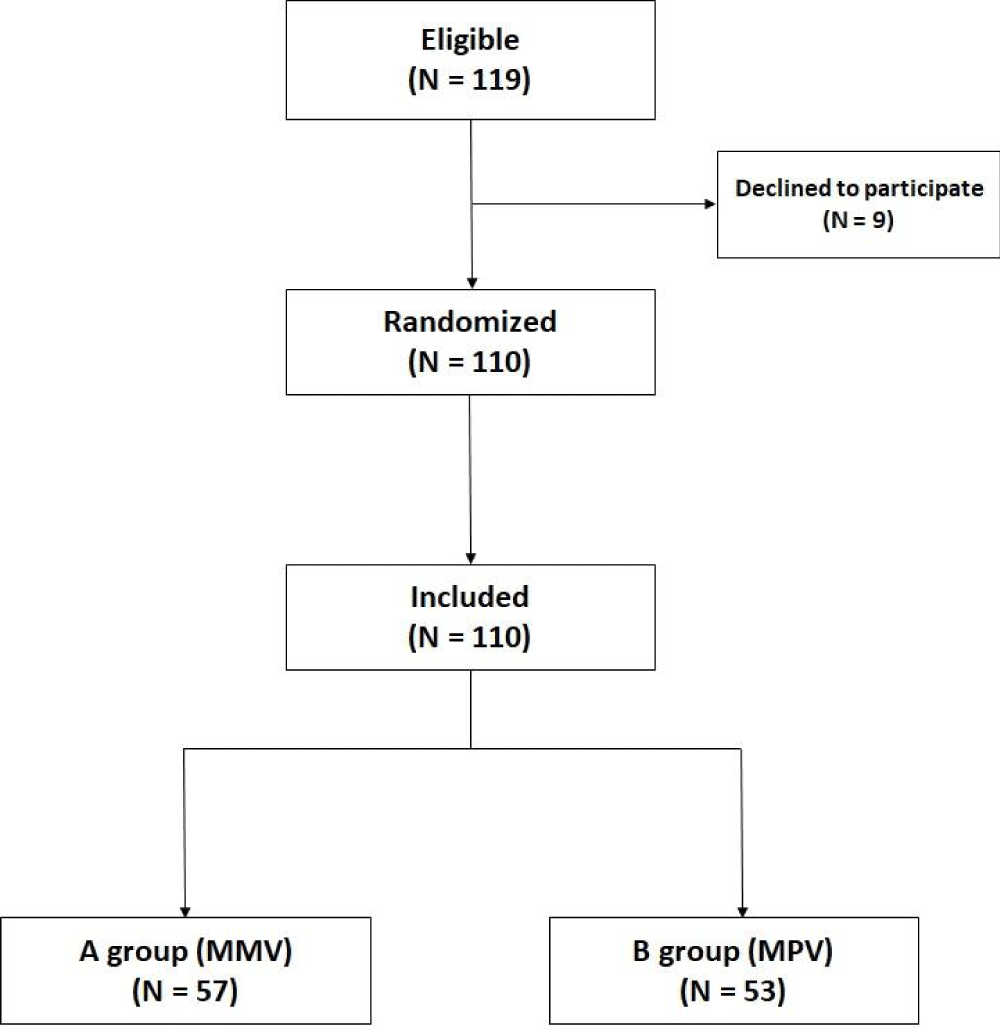
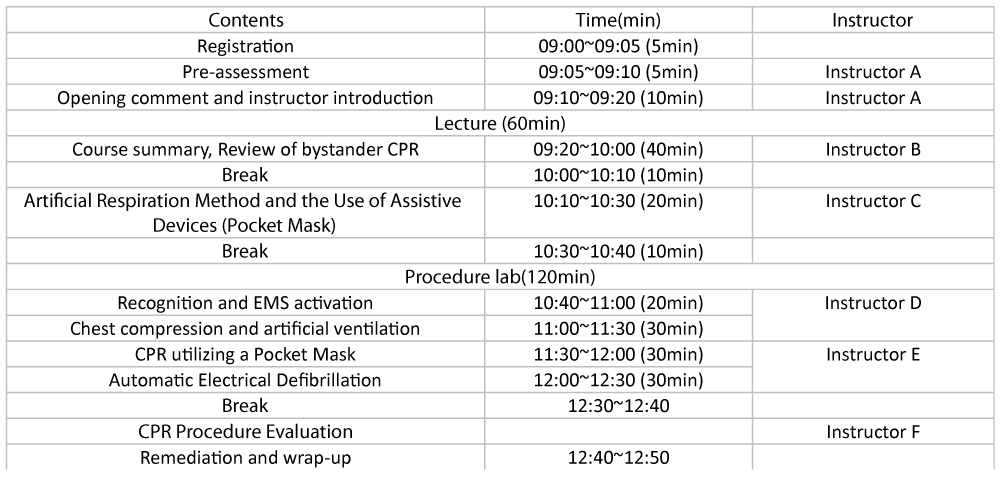
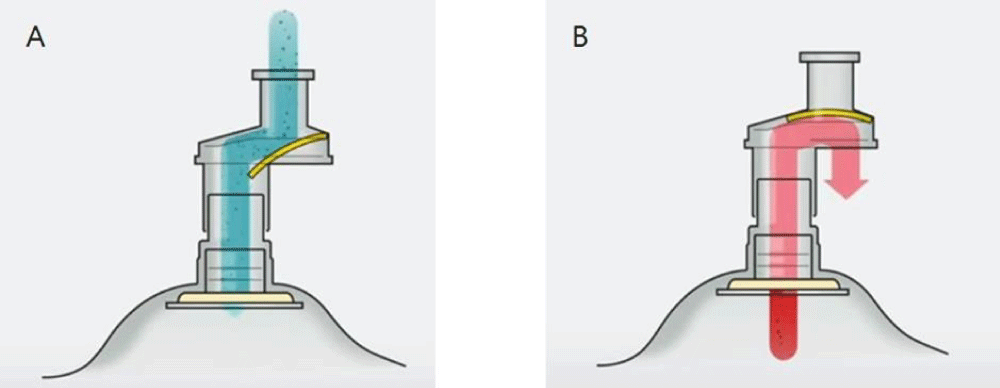
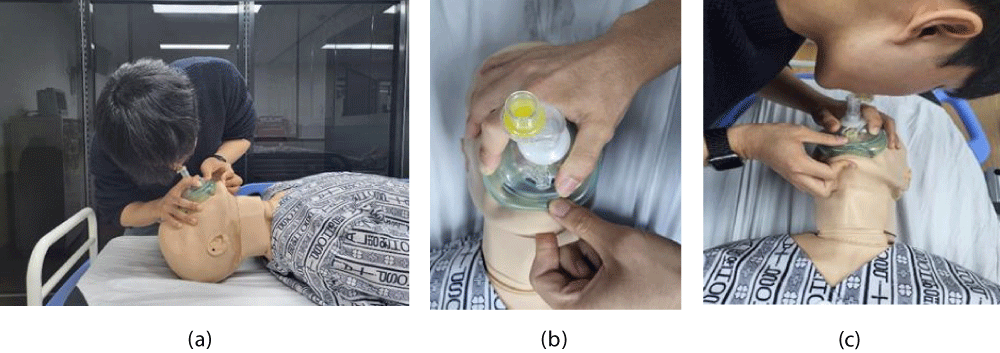
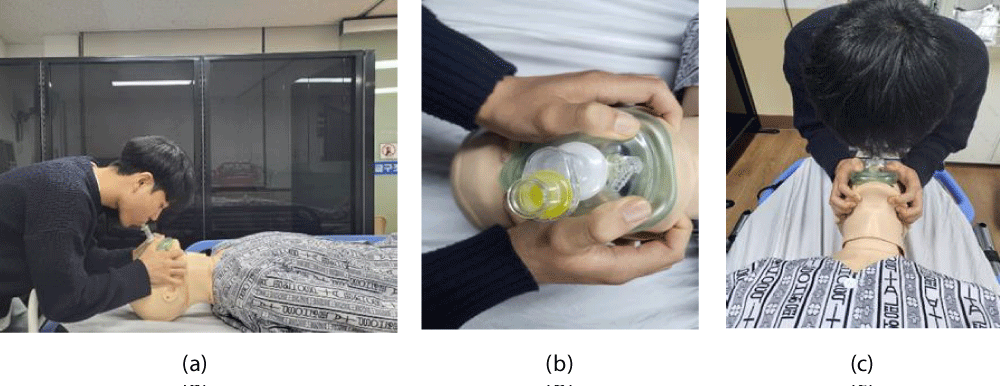


 Save to Mendeley
Save to Mendeley
